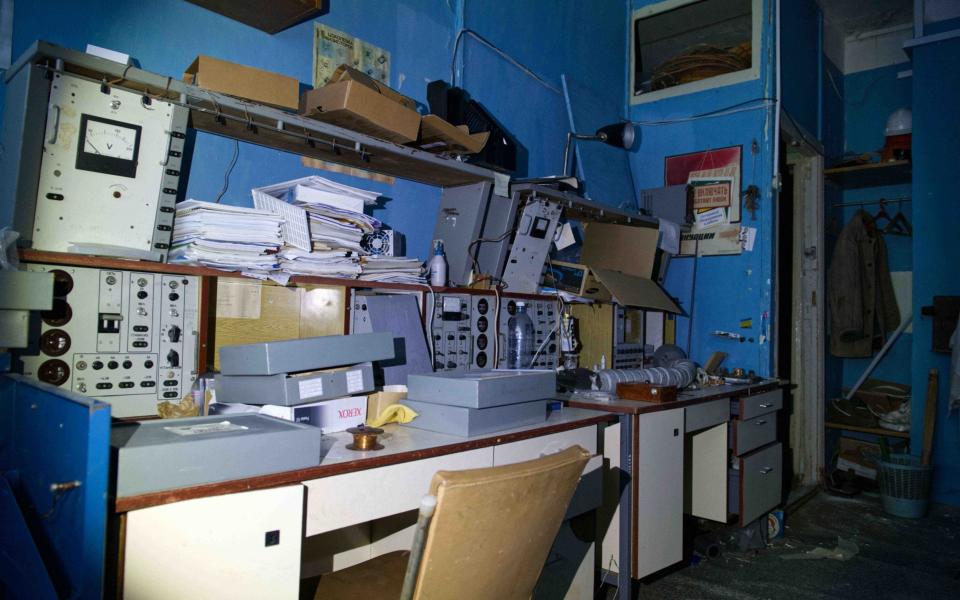Ukrainian scientists investigate spike in nuclear reactions at Chernobyl's inaccessible room

Ukrainian scientists are investigating a rise in nuclear activity inside an inaccessible chamber deep inside Chernobyl nuclear power station.
Several Ukrainian scientists from the local research institute that studies the plant at Chernobyl warned at a conference in Ukraine last month that sensors were tracking a rising neutron count in Room 305/2, which hasn't been seen by human eyes or robots since the 1986 disaster.
There are fears that a critical event could be sparked, such as radiation levels climbing 10 times higher than what is considered normal, or that the walls of the reactor hole - which are already damaged - could crumble further and the structure could fall down entirely inside its new cover.
A giant €1.5 billion steel arch structure known as the New Safe Confinement was installed to cover the entire reactor in 2019, preventing rain or any outside elements from stoking fission reactions.

Evidence has been found that fission reactions are smoldering again in the debris contaminated by uranium fuel.
“It’s like the embers in a barbecue pit,” Neil Hyatt, a nuclear materials chemist at the University of Sheffield, told Science magazine, which first reported the story last week.
The room is under the destroyed reactor and cannot be accessed because of deadly radiation levels and the concrete that was poured in there during the initial clean-up operation.
One of Chernobyl power station’s nuclear reactors exploded on 26 April, 1986, spewing radioactive material across Europe and bringing down parts of the giant building.
As rescue teams and firefighters struggled to deal with the disaster, the mangled reactor melted down, turning uranium fuel rods and everything around it into a radioactive lava that flowed into the rooms underneath the reactor hall and eventually hardened into what is called fuel-containing materials. These rock-hard, intensely radioactive materials now pose a potential threat, according to scientists.
It is still unclear why the neutron count has risen but one theory is that the confinement is causing the plant to dry out, thus prompting uranium fuel to decay, emitting neutrons.
Ukrainian scientists are investigating whether the fission reaction is likely to fade or whether they will need to come up with a plan to combat it.

Chernobyl is the oldest destroyed nuclear reactor in the world, and there is no sense what could happen to it. E
But scientists say a fresh disaster is unlikely.
Roman Godun, head of the safety department at the Kyiv-based Institute for Safety Problems of Nuclear Power Plants, said in a presentation last month that scientists estimate that 75 tonnes of fuel-containing materials inside that room - “enough for critical composition.”
“Nobody can be sure how much material is there,” Mr Godun said.
Ukrainian scientists, however, assure that the station, thanks to its new confinement, has all the systems in place to contain any critical event there.
The new confinement was built to seal off the area and act as a tomb to confine any spike in radiation.
The neutron count has since stabilised in most areas but it doubled in the past four years in Room 305/2 underneath the reactor, according to the Ukrainian scientists who have to rely on data samples taken nearby and mathematical models to make their conclusions.
Mr Godun hopes for new robotic technology to drill into the room and install sensors to monitor radiation levels underneath the reactor to help forecasting.
He warned, however, that the “problem of access to the fuel-containing material cluster should be resolved in the near future.”
Ukraine is hoping to work out a plan later this year to deal with radioactive materials together with the European Bank for Reconstruction and Development, which funded the construction of the new shelter and warned that the work to remove all the fuel-containing materials would “take decades to complete.”

